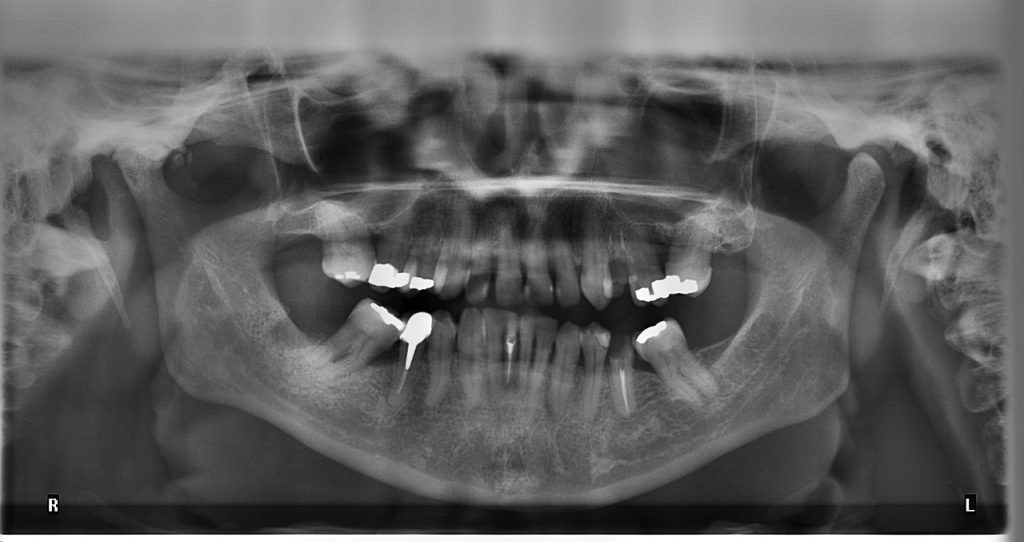Tooth fillings – Types, materials, and possible problems
A dental filling, often referred to simply as a ‘filling’, is a tooth repair that many people have in their lives. It restores (part of) a tooth that has been damaged by decay. Which types and materials are available for tooth fillings, and which problems occur? Read our complete guide.
In This Article:
- Tooth fillings or dental fillings: what’s in a name?
- Materials for dental fillings
- Different types of tooth fillings
- Problems with tooth fillings
- How do you choose the right filling?
Tooth fillings or dental fillings: what’s in a name?
The process of getting a dental filling is quite simple. The dentist first removes the decayed part of the tooth. After that, we clean the affected area, to make sure all debris is gone. Once the tooth is clean, the dentist fills the cavity with a filling material that you chose. This restores the tooth’s original shape and allows it to function normally again.
The terms ‘tooth filling’ and ‘dental filling’ are often used interchangeably. Both refer to the same procedure of restoring the damaged part of a tooth. In general, the term ‘dental filling’ is more commonly used in professional settings, while ‘tooth filling’ is often used in more casual contexts.

Materials for dental fillings
The choice of filling material is personal. It depends on different factors, like the location and extent of the decay, and the cost. Of course, your dentist also makes a recommendation. Each material has its own pros and cons, in terms of cost, looks, durability, and ease of application.
For example, gold is a popular choice for its durability and longevity. It often lasts at least 10 to 15 years, but this can go up to 30 if the filling is maintained well. It is noticeable, though.
Porcelain, on the other hand, has a lot of aesthetic appeal (it looks natural) and is generally stain-resistant. That’s also the case for composite resin fillings. These are made from tooth-colored plastic and glass materials and can match the color of your existing teeth really well. They also provide additional support to the tooth. However, they may chip over time and can cost up to twice as much as amalgam fillings.
Silver amalgam fillings are a mixture of mercury, silver, tin, zinc, and copper. They’re affordable and durable. The downside is that they may cause sensitivity and are more noticeable due to their silver color.
Glass ionomer fillings, made from a specific type of glass material and acrylic, are mostly used for fillings below the gum line. However, they are weaker than most other filling materials.
Also, consult your dentist to see which material best suits your needs.
Different types of tooth fillings
These are the most commonly used fillings, to take care of cavities. Your dentist can help you decide which one suits your needs best.
Amalgam Fillings
Amalgam fillings are a traditional type of tooth fillings. They’re made from a mixture of metals, usually silver, tin — or a mixture of tin and copper — small traces of zinc, and mercury. The American Dental Association has deemed the use of mercury in amalgam fillings safe. We use amalgam often for filling cavities within the molars. That’s because they’re durable and able to withstand a lot of wear and tear.
- Advantages: Amalgam fillings are cost-effective, robust, and long-lasting (up to 15 years).
- Disadvantages: They can cause increased sensitivity to the teeth due to the metal shrinking or expanding when the temperature changes. They are also more noticeable due to their silver color.
Composite Fillings
Composite fillings are made from a mixture of plastic (acrylic) resin that’s reinforced with a powdered glass filler. They restore lost or damaged areas of a tooth, such as when there are cavities, or it has suffered trauma or a fracture.
- Advantages: The biggest advantage of composite fillings is that they closely resemble the natural color of the teeth. They also help further preservation of the dental structure.
- Disadvantages: Less durable than harder fillings, like amalgam fillings. After some years, composite fillings can chip.
Gold Fillings
Gold fillings are usually really only 75% gold. The other 25% is a mixture of copper, silver, platinum, palladium, and zinc. They’re installed on chewing teeth if the thickness of the enamel is still good enough.
- Advantages: Gold fillings can last really long, 15 to 30 years, due to the durable characteristics of the metal.
- Disadvantages: Gold is an expensive material, and so are these fillings.
Ceramic Fillings
Ceramic fillings incorporate a type of porcelain. They’re typically used when there is a lot of damage on the tooth.
- Advantages: Ceramic fillings are durable, and aesthetically pleasing.
- Disadvantages: Typically bulkier than composite fillings. They are mostly used on a larger cavity to fit the tooth.
Glass Ionomer Fillings
Ionomer is a material made from acrylic and a component of glass – ‘fluoro-aluminosilicate glass’. They’re used for temporary fillings, but also for decay that is located around the gum lines, and baby teeth.
- Advantages: This material releases fluoride over time, thus strengthening your teeth and maintaining good dental health.
- Disadvantages: The material is a lot weaker than other filling materials and is prone to quick wear and tear.

Problems with tooth fillings
Dental fillings, and the placement, are considered very safe. More than 39% of all US citizens have 1 to 5 fillings, 15% have 5 to 10 fillings. In very few cases, problems occur. But just in case, you could look out for these.
Tooth discomfort and sensitivity
It’s not unusual that the tooth is sensitive to temperature changes or pressure after a dental filling procedure. This sensitivity usually goes away after some time. If it doesn’t, there can be several causes. Some are nerve irritation, incorrect bite alignment, or the proximity of the filling to the tooth’s nerve.
To manage this discomfort and sensitivity, dentists often recommend using a desensitizing toothpaste, or they apply a desensitizing agent to the tooth. If the discomfort is severe or persistent, a root canal procedure may be suggested.
Allergic reactions
Allergic reactions to tooth fillings are rare, but they can happen. These reactions are typically caused by sensitivity to the material used in the fillings, such as silver, mercury, or other metals.
Symptoms of an allergic reaction are redness, itchiness, and the appearance of skin rashes around the mouth, tooth, or even neck. If you’re allergic to a dental filling, the dentist may need to remove the filling and replace it with a material that you are not allergic to. It helps to discuss any known allergies or sensitivities with your dentist before the procedure.
Deterioration of fillings
Over time, it’s normal for tooth fillings to deteriorate. Of course, natural wear and tear is one of the possible causes. Others are the development of new cavities around the dental filling or the expansion and contraction of the filling material, which can damage the filling and the tooth.
Regular dental check-ups help to identify deteriorating fillings early on. This prevents the loss of a filling. If a filling is found to be breaking down, the dentist can replace it before it causes further problems. Good oral hygiene practices, such as regular brushing and flossing, also prevent new cavities from forming around the fillings.
How do you choose the right filling?
The choice for a specific tooth filling is highly personal. But of course, your dentist will help you.
Factors to consider are the extent of the decay, where the cavity is located, price, and aesthetics.
For instance, fillings that are visible when you smile or talk, such as those in your front teeth, often require aesthetically pleasing materials like composite resin or porcelain. On the other hand, fillings in the back teeth that need to withstand a lot of pressure from chewing might be better suited to stronger materials like amalgam or gold.
Some patients may have allergies or sensitivities to certain materials, which would also affect the choice of filling material. If you know you are sensitive to any of the materials, tell your dentist.

